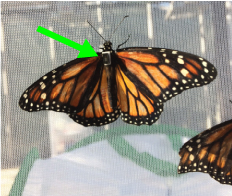Home

Every Fall, millions of Monarch butterflies migrate south to Central Mexico over the span of 2-3 months to survive the coming winter. However, recent studies show a sharp decline in the population of Monarch butterflies. To help preserve these majestic butterflies and better understand their annual migration paths, the Monarch Butterfly Fund (MBF) initiated the Monarch Butterfly Flight Challenge (MBFC) in search of an innovative, new method to track the Monarchs’ migration.

Due to the butterflies’ small size, standard tracking devices for migratory animals do not work on butterflies. Current records of Monarch butterfly migration rely heavily on adhesive paper tags attached to the butterflies’ wings, which researchers search for on fallen butterflies at their overwintering destinations in Mexico. As well, chemical analyses allow researchers to infer the regional “birthplace” of individual butterflies. However, these methods provide little information about the actual migration paths. A better understanding of migration paths is needed to protect Monarchs during their perilous journey and preserve this marvelous species.
Using the Michigan Micro Mote (M3), the world’s smallest computer to date, our team at the University of has built a tiny sensor (about 5.0mm x 5.0mm x 2mm in size and less than 50 mg in weight) that can be placed on a butterfly without disrupting its life cycle and flight. The sensor accurately logs light intensity and temperature information from the butterfly’s surroundings, which can be remotely read out once the butterfly arrives at its destination. Paired with accurate weather and environmental information, this data is then used to determine the exact path of the butterfly day-by-day using top-notch machine learning algorithms.


 MENU
MENU